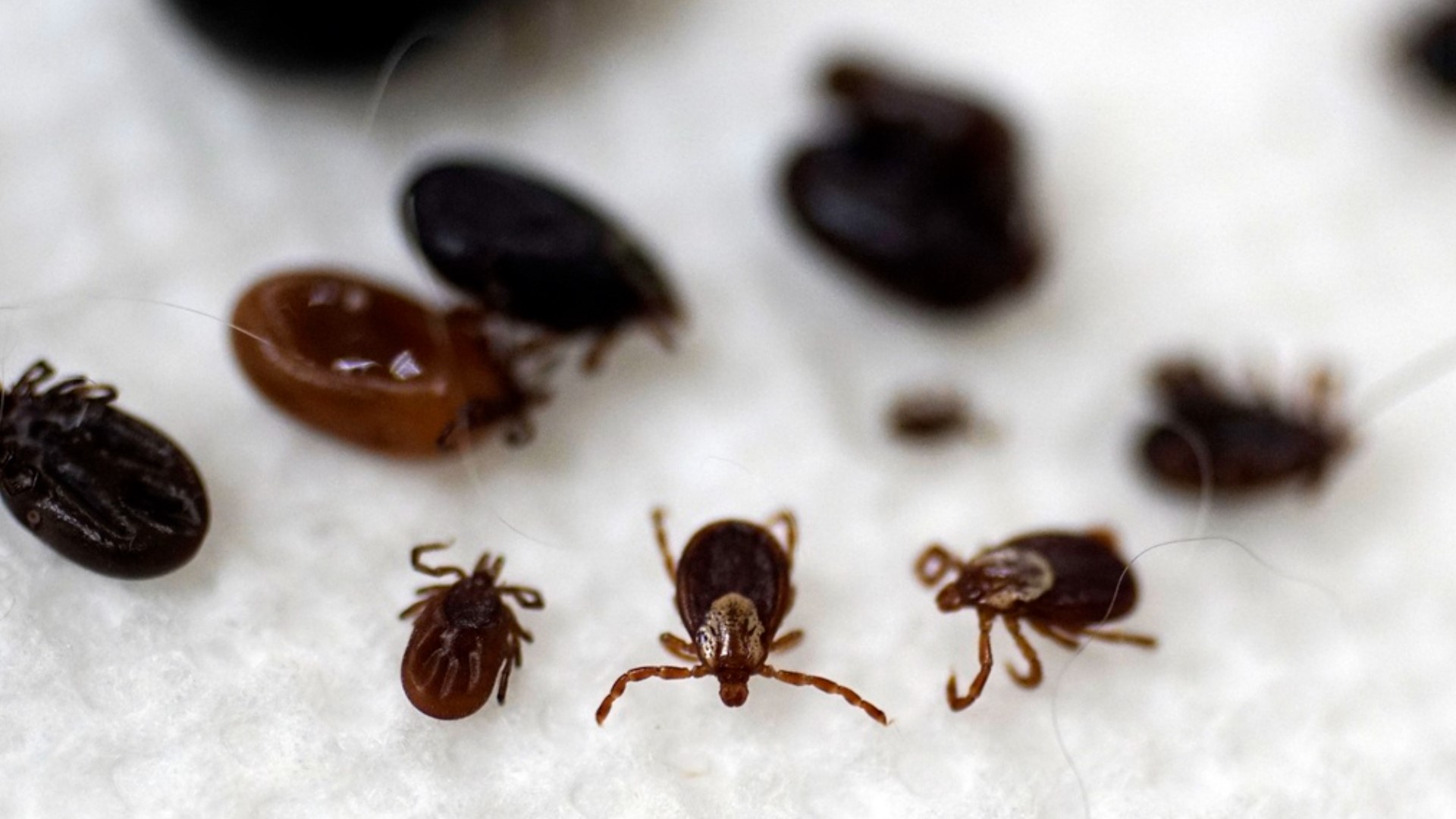CUMBERLAND, Maine — Lyme disease is emerging as an even bigger health concern in 2024, as Maine comes off a record number of confirmed Lyme disease cases in 2023.
According to the Maine Center for Disease Control and Prevention, there was a jump in the number of cases from 2,617 in 2022 to 2,904 last year.
One factor that could be playing a role is the big jump in ticks in the nymph stage, which are more difficult to detect and can be more lethal when it comes to spreading tick-borne illness.
Two years ago, Natashia Berry started having debilitating headaches and swelling in her knee. These symptoms left the mother of two unable to work as walking became too difficult.
"Were you just lying down at home, pretty much?" we asked.
"Yup, with the blinds closed," Berry explained. "And getting up to go the bathroom, I needed help, eventually, I ended up on crutches."
Her doctor recommended physical therapy, which did nothing. With her symptoms getting worse, she finally got answers at an orthopedic clinic.
"They drained my knee and tested that, and it came back as Lyme disease," Berry stated.
She never found a tick on her body and didn't have any of the telltale signs of a bull's eye rash, which only show up in a little over one-third of patients.
She finally made a full recovery after receiving rounds of IV antibiotic treatment in the hospital and at home, part of an alarming long-term trend of cases of tick-borne infection increasing in Maine.
Data released by the Maine CDC also found that Waldo, Lincoln, and Knox counties are emerging as the state's hotspots, with the highest levels of the disease reported.
"With the increase in tickborne diseases, the Maine CDC has also ramped up surveillance and communication efforts with our health care provider community and the vector-borne workgroup," a spokesperson with the Maine CDC told NEWS CENTER Maine in a statement. "Ensuring that providers across Maine are aware of the prevalence of ticks and tickborne diseases, and reminding the provider community to consider tickborne diseases for patients presenting with relevant symptoms has been another key to our approach in helping to combat tickborne diseases across Maine."
"Deer ticks are expanding their range farther and farther north, as well as farther Down East," Griffin Dill, the integrated pest management professional for the University of Maine Cooperative Extension's Tick Lab, said.
He said climate change, including last year's unseasonably wet summer, has allowed ticks to expand their range. Dill said the submissions of ticks in the nymph stage doubled last year. These young ticks are so small, they look like moving poppy seeds and are more likely to stay attached longer because they often go undetected on the body.
"The fact that they are harder to find makes them a more dangerous life stage so that could be playing a role here as to why we are seeing this increase," Dill explained.
Utilizing more than $6 million in federal funding, the University of Maine is ramping up a new team of researchers to track ticks, the pathogens they carry, and habitats throughout the state.
"We are going to be putting out weather stations to monitor the environmental data at each site," Dill said.
As for Natashia, she and her husband hired Jon Cole, a Lyme disease survivor and the owner of Northwoods Tick Control, who treated her property for ticks. The family also takes other precautions to stay safe, even in the wintertime, as ticks can survive buried in the leaf litter under the snow.
"Double check your entire body when you come inside from being outdoors," Natasha advised.
The Maine CDC also recommends removing clothing when you get home and putting it in the dryer before washing. Use high heat for 10 to 15 minutes to kill any crawling ticks.

